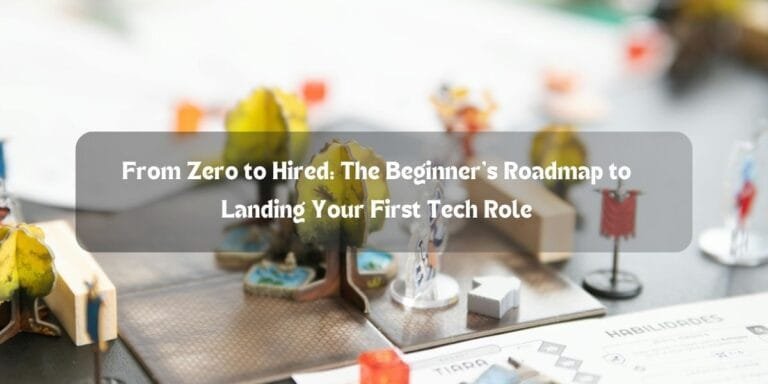

Introduction
Imagine stepping into a world where you can practice critical skills without risk, where mistakes become powerful learning moments rather than costly ones. That’s the promise of virtual reality (VR) and augmented reality (AR) in training — and it’s not science fiction. It’s happening now. At Course Plus, where we design courses that truly empower learners, we believe the future of hands-on training lies in immersive experiences.
Seeing the Shift: Why VR and AR Matter in Training
Once, training meant a classroom, a slideshow, or a static manual. Today, thanks to VR and AR, learners can strap on a headset or point at a device and enter a scenario that feels real. You’re not just reading about a fire drill or a machinery malfunction — you’re in the drill. You experience the sound of alarms, the heat of the situation (virtually), the urgency. That kind of realism builds muscle memory, confidence and faster competency.
Because the stakes are higher in many fields — safety, health, complex operations — realistic training isn’t optional anymore. It’s essential. With AR overlays you might see live feedback while using a tool; with VR you might walk through a simulated environment with all the pressure of real life, and without the real-world risk.
A Story: From Hesitation to Confidence
Meet Sarah, a maintenance technician at a manufacturing plant. In her first week on the job, she held a training manual in hand, flipped pages and tried to visualise the process. She felt uncertain. Then she stepped into a VR simulation. Suddenly she was escorting a virtual machine shutdown in response to a fault alarm. She made a mistake — missed a safety switch — the system paused, provided feedback, she repeated the scenario. Next time she carried out the procedure easily, confidently. When she later faced the real machine, the process felt familiar. That transformation — from hesitation to readiness — encapsulates what VR/AR training brings.
How VR and AR Deliver Realistic, Hands-On Experiences
In immersive training, the “hands-on” part isn’t limited by location, equipment or risk. For example:
- A VR headset places you inside a high-risk environment (construction site, chemical plant, aircraft cockpit) and lets you respond to faults, emergencies or operational tasks.
- AR on a tablet or smart glasses overlays step-by-step instructions while you work on real equipment, giving guidance in real time.
- Both techs allow repeated practice, error-forgiving sandbox modes, and instantaneous feedback loops.
With repeated immersive sessions, learners build familiarity, speed and confidence. They learn by doing — not just reading or watching. And that’s what makes the training stick.
Why This Matters for Organisations and Learners
For organisations, the benefits are tangible: reduced accidents, lower training costs, better retention of skills, more consistent competence among staff. For learners, it means less anxiety, more engagement, more meaningful learning. Because you’re actively involved, you care more, you focus more, you perform more.
And that’s where Course Plus steps in. Our mission is to deliver accredited, practical, high-impact learning experiences. By integrating VR and/or AR modules into our offering, we enable clients to train in ways that weren’t possible before. Cleaner, safer, smarter. The future is immersive — and it’s here.
Best Practices to Maximize Immersive Training Success
It’s not enough just to invest in VR/AR — the experience must be well designed. First, ensure the scenario mirrors real-world tasks and risks. If it’s too far removed, learners will feel disconnected. Second, allow repeat practice with variation: scenarios should change so the learner doesn’t simply memorise steps but truly understands the process. Third, provide real-time feedback: let the system show what was done right or wrong and why. Fourth, integrate the immersive training with follow-up: debriefings, checklists, real-world applications. And finally, gather data: track performance improvements, reduce errors, and refine training modules over time.
At Course Plus we embed these principles into our immersive training experiences to amplify ROI, learning outcomes and user satisfaction.
Overcoming Challenges and Building the Right Mindset
Transitioning to VR/AR training may raise questions: How much does it cost? Will my team adopt it? Is the tech mature enough? The story of organisations that have embraced it reveals a pattern: start with a pilot, choose a high-impact scenario, measure improvements, iterate and scale. The tech has matured significantly: hardware is more affordable, scenarios more realistic, user-interfaces more intuitive. And crucially, learners now expect engagement. The idea of passive training feels outdated; immersive training feels modern.
The Future of Training is Immersive
Looking ahead, imagine remote teams training together in a shared virtual space; imagine AR overlays diagnosing equipment issues in real time while you’re onsite. Imagine building skill-communities, peer-learning inside virtual worlds. This is not tomorrow — it’s happening. Organisations that adopt immersive training early gain a competitive edge: more agile workforce, fewer errors, heightened confidence, better safety.
For learners, the opportunity is equally exciting: step into environments that were once unreachable, train in high-stakes contexts without risk, build real-world readiness before the first shift. That equation of experience + confidence + competence is what immersive training delivers.
At Course Plus, we create pathways that combine theory with practice, facilitated via cutting-edge immersive tools. Whether you are upskilling staff, building resilience or launching a new training initiative, immersive VR/AR modules can be a game-changer.
Conclusion
In a world where the demands on competence, safety and speed are ever increasing, training cannot remain static. Immersive tools like VR and AR transform learning from watching and waiting into doing and mastering. They bridge the gap between classroom and reality, between theory and action. By embracing these tools, organisations and learners unlock hands-on, realistic training experiences that deliver results. If you’re ready to level up training in a meaningful way, the immersive route may be exactly what you’ve been looking for.
Frequently asked Questions
What is the difference between virtual reality (VR) and augmented reality (AR) in training contexts?
Virtual reality immerses the user in a completely simulated environment — the learner is inside a digital world. Augmented reality overlays digital information (instructions, metrics, visuals) onto the real-world view. Both support hands-on training, but VR emphasizes full immersion while AR emphasizes real environment plus digital support.
Can immersive VR/AR training actually improve real-world performance?
Yes — immersive training builds familiarity, muscle memory and confidence by simulating real scenarios repeatedly and safely. Mistakes become learning moments. Well-designed modules have shown stronger retention and faster competency than traditional training alone.
Is the cost of implementing VR/AR high for organisations?
The cost has decreased significantly in recent years thanks to cheaper hardware, easier software and more providers. While initial setup requires investment, the return on training quality, reduced errors and increased safety often justifies it. Pilots and phased adoption help manage cost.
How do you ensure learners adopt immersive training tools effectively?
Start with a high-impact scenario learners recognise, ensure the interface is user-friendly, provide debrief and integrate with existing workflows. Support adoption via clear communication of benefits, hands-on orientation and continuous feedback.
Courses Related To This Blog
Discover a range of carefully selected online courses crafted to enhance your skills across multiple topics. Engage with affordable, top-quality courses designed to provide in-depth learning and address your unique educational needs effectively.
Join the Community & Get Updates🔥
Related Post
Explore our latest expert insights, practical guides, and in-depth resources on trending topics designed to answer your questions, solve your challenges, and help you stay ahead with up-to-date trends and strategies.













